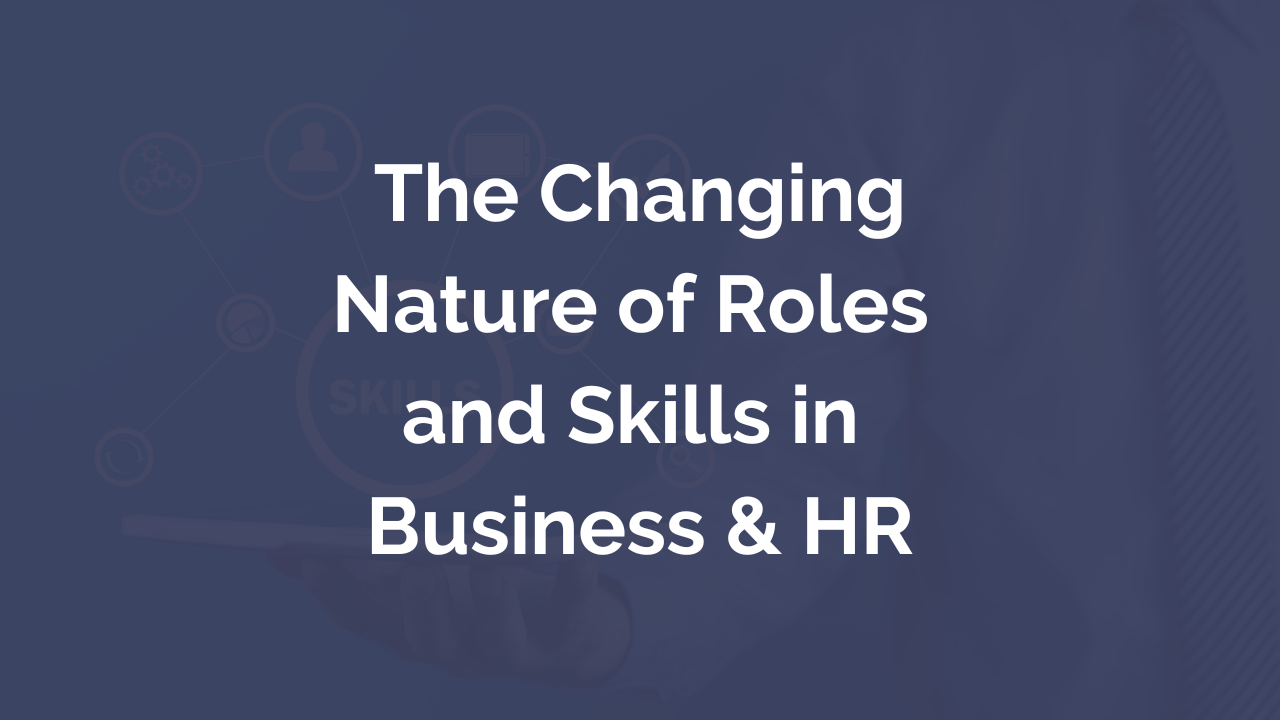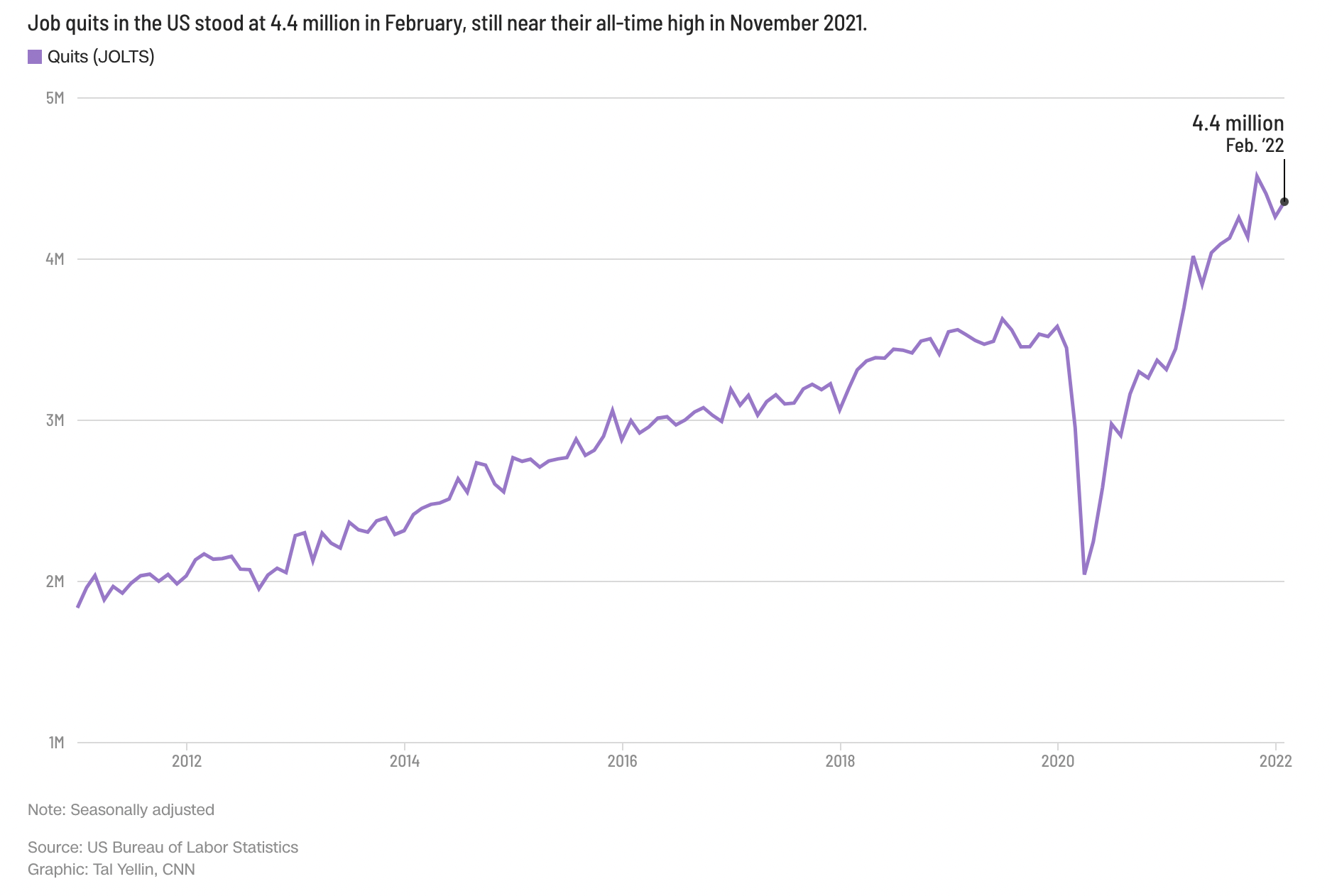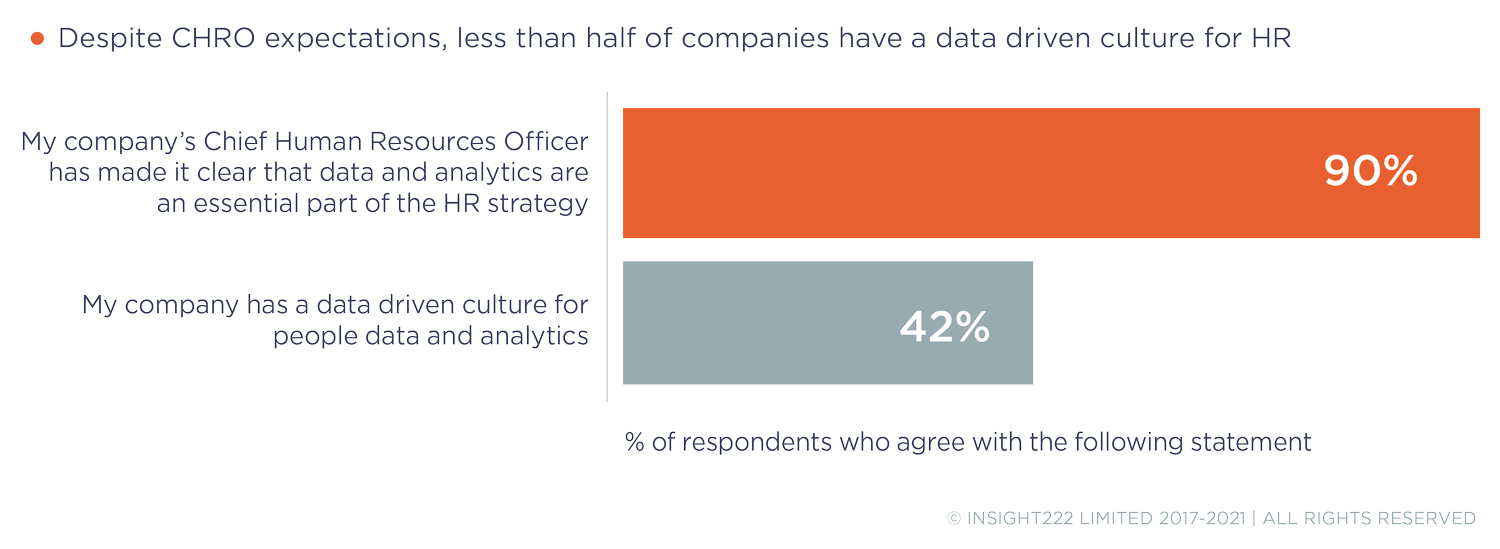The Changing Nature of Roles and Skills in Business & HR
The phrase, The Great Resignation, cited by the professor of business administration at Texas A&M University, Anthony Klotz, addressed the shift in the workforce when employees began speaking out about what they wanted and needed from their employment following the pandemic. For all the names it has been called, The Great Reset, The Great Realisation, and the Great Resignation, it has undoubtedly changed the workplace and one of HRs key pain points. Some requests, such as higher wages and more work/life balance, were no surprise. But other items employees began requesting have the potential to change, even the definitions of employee, roles, and skills.
How The Great Resignation Changed Employee Demands
With the newfound empowerment from labour shortages, employees began re-evaluating their priorities and how their jobs influenced their lives. By shifting the main focus over to self-investment and self-improvement, employees began expressing the desire to not only have remote work options and flexibility with work, but they also asked for expansion in their current roles and more opportunities to acquire more influential and new skills.
This means that many businesses may look to dissolving jobs and job titles and concentrate on what work needs to be done in the organisation and who has the skills to aid with those jobs.
How Can Businesses Provide Opportunities For Their Employees?
To address this coming change, businesses want to provide opportunities for employees to expand their knowledge and skills. Here, CHROs and business leaders need to work together to meet the needs of their employees while remaining business-focused. To do this effectively, there are some key steps to take.
Assess the Company's Long-Term Business Goals
Before taking on the challenge, HR professionals, People Analytics teams, and decision makers would best benefit by determining the organisation's long-term goals. Where does the company see itself in five years? Ten years? Twenty? At this time, data can be collected to determine if the current workforce has the skills needed or if there are any skill gaps that the company will have to contend with in the future. Only once it is understood what the organisation requires to be successful can measures be taken to provide employment opportunities.
Invest in Employee Listening
Once business stakeholders are on the same page for their business goal, the attention can shift to meeting the employee's needs. This can be different from industry to industry. To serve the employees best, the most straightforward step is asking them. Implementing employee listening can give valuable information that can save time and money from costly future mistakes.
Three Important Ways to Implement Employee Listening:
Employee surveys
Stay/exit interviews
One-on-one discussions
Rethink and Reinvest in the Work Operating System
After a plan of where the company sees itself in the future, the next step is to re-examine the operating system to provide better employee opportunities. The process begins by focusing on four core principles behind a skill-based approach to make the change easier.
Change Your Work Operating System By Analysing The Work
One of the leading initial tasks to complete when rethinking the work operating system is to focus on the tasks needed for the business to be successful and not so much on titles. Novartis is a great example of a business that built a skills operating system for workforce planning and impacted their business.
Achieving the Best Combination of Manual and Automation
Achieving the optimal combinations of manual work and automation where specific types of automation can substitute certain types of human endeavour is essential. However, ensure to do this while assisting the person in performing the task to the best of their ability to ensure productivity.
Reinventing the Job
considering the full array of human work engagement, such as is employment the best way of getting work done or can a job marketplace fill in the gaps?
Allowing Talent to Flow
Allowing talent to flow increases how work gets done and with which talent connects to the work.
This all assists with the increasing inability of the current work operation system with its indexing and legacy of jobs and the core foundation of jobs being the elemental unit of work.
What Are Positive Opportunities to Offer Employees?
After assessments are complete, choosing options for employees should become more manageable. CHROs and business leaders can begin developing a roadmap that best fits their industry by implementing one or multiple options that best suit all stakeholders.
Mentoring Programs
Mentoring programs offer opportunities for newer employees to go under the wing of more seasoned employees and find guidance and support.
Promote Outside Learning and Upskilling
Upskilling provides means for employees to learn information that is not available during the daily functions of work and can be offered through online seminars, outside institutions, or internal learning. It is essential for HR to upskill to keep pace with the future.
Create a Personalised Learning Process
Learning processes utilise AI to discover skill gaps with the individual and provide suggestions on coursework. These learning processes also take advantage of the latest technology and improve your overall training.
Create a Talent Marketplace
Create a platform where managers can post projects or jobs internally for employees to bid on and assist with the influx. There are numerous benefits to talent marketplace.
The Benefits of Changing the Nature of Jobs
Granted, a few may neglect the company's efforts or jump ship at the next chance after retraining and upskilling. And there may be some scepticism at the idea of jobs disappearing and skills being the overall definition of what employees do for an organisation. But focusing more on the work that needs to be done and extending opportunities for employees far outweighs the cost of the few who abuse the program.
Consider this:
The Impact of Employee Retention
Building a culture of learning is one of the key ways to positively impact employee retention. Companies largely lose employees for one of two reasons. One is that employees find other jobs that better fit their needs and quit. Alternatively, the role the employee performs becomes obsolete, and the business finds they need to terminate the employment contract with the individual.
By investing in upskilling employees, businesses have a higher chance of employees remaining with the company due to continued learning opportunities and a better employee experience. Also, companies can repurpose talent that they would otherwise have lost due to a shift in business, causing jobs to become obsolete.
Promoting a Positive Employee Experience
Through continued opportunities, employees will have a higher sense of job satisfaction and feelings of staying relevant. Because the company shows they care, employees will have a more positive experience in the organisation and become more engaged with their goals and mission statement.
More Profitable Results
Organisations know that the more engaged employees are with a company, regardless of their department, the more productive they become. But also a more educated staff can contribute to the company's higher profit margin. Increased opportunities help talent reach their full potential and put the business in a position to be more flexible and agile in a constantly shifting world, and companies need to move quickly to adapt. Businesses will find quicker means for closing skills gaps that, if not addressed, could handicap the company and hurt its ability to remain competitive.
Change Roles and Skills For the Future of Human Resources
With employees requesting a change in work to meet their needs, the nature of roles and skills is beginning to morph into a more substantial contract between employer and employee, offering employee career growth and development. For CHRO and HRBP to stay on top of the changes, they will also want to continue learning vital skills and become more business-focused, data-driven, and experience-led HR professionals.
Build the Skills You Need for Success With myHRfuture!
We help individuals and organisations reinvent learning. Our learning programs support HR Business Partners to build the skills they need to effectively use analytics in HR to have data driven conversations with the business that drive actionable outcomes. The Data Driven HR Fundamentals certification is a collection of 6 on-demand, video based training courses that can be completed within a 12 month period, at your own pace. This certification program is designed to support you and your team build their skills in analytical thinking, data analytics and storytelling. By completing this learning program you will learn how to better interpret HR data and be confident in having data driven conversations with the business, that drive actionable outcomes.







